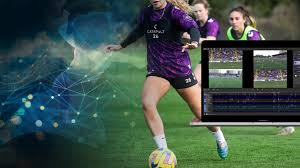In the fast-paced world of sports, decisions made by referees and officials can have a significant impact on the outcome of a game. For years, referees have relied on their judgment and experience to make decisions in real-time, but technological advancements are now transforming the way sports are officiated. From video assistant referees (VAR) in football to Hawk-Eye technology in tennis, technology is playing an increasingly important role in ensuring that decisions are accurate, fair, and transparent.
This article explores how technology is shaping the future of sports refereeing, its current applications, and the potential benefits and challenges it brings to the world of sports.
- Video Assistant Referee (VAR): Revolutionizing Football
The introduction of the Video Assistant Referee (VAR) system in football has been one of the most significant technological changes to officiating in recent years. VAR allows on-field referees to review their decisions using video footage and provide a more accurate ruling, particularly in cases involving goals, penalties, red cards, and offside calls.
Key Features of VAR:
- Clear and Obvious Errors: VAR is used to correct “clear and obvious” errors made by the on-field referees. If a mistake is identified, the video assistant can advise the referee to review the decision. For example, if a referee misses a potential handball or penalty incident, VAR can step in to help ensure the correct decision is made.
- Communication with On-Field Referees: The VAR system operates through a communication link between the video assistant and the referee on the field. This allows for quick review and decision-making without interrupting the flow of the game.
- Improved Accuracy: VAR has greatly increased the accuracy of decisions, ensuring that referees can rely on multiple angles and slow-motion replays to make more informed calls.
While VAR has received some criticism for slowing down the game and causing controversy over its application, it has undoubtedly improved the fairness and transparency of decisions, reducing the likelihood of incorrect calls affecting the outcome of important matches.
- Hawk-Eye: Precision Technology in Tennis and Other Sports
Hawk-Eye technology, originally developed for tennis, has become a cornerstone of officiating in several sports. This system uses multiple high-speed cameras positioned around the playing area to track the trajectory of a ball and provide precise information about its location. The technology has been widely adopted in sports like tennis, cricket, and soccer to assist with line calls and disputes.
Key Applications of Hawk-Eye:
- Tennis: In tennis, Hawk-Eye is used to review line calls, providing players and officials with instant, accurate data about whether a ball is in or out. Players can challenge a call, and if the review shows that the original decision was incorrect, the point is awarded to the player. This system helps eliminate human error in line judging, leading to fairer outcomes.
- Cricket: Hawk-Eye is used in cricket to track the path of the ball, especially for decisions involving leg before wicket (LBW) calls. The system provides a visual representation of how the ball would have traveled after hitting the batsman, helping umpires make more accurate decisions.
- Soccer: In soccer, Hawk-Eye is employed in goal-line technology to determine whether a ball has completely crossed the goal line. This eliminates the need for subjective judgment in critical moments and ensures fairness in determining whether a goal has been scored.
By offering highly accurate and real-time data, Hawk-Eye technology has revolutionized officiating in multiple sports, improving decision-making and boosting the credibility of the referee’s calls.
- Goal-Line Technology: Eliminating Doubt in Soccer
Goal-line technology (GLT) is another groundbreaking development in sports refereeing, particularly in soccer. The technology is used to determine whether the entire ball has crossed the goal line, a situation that can often lead to controversial decisions. GLT uses cameras, sensors, and magnetic fields to accurately track the ball’s position in real-time.
Key Features of Goal-Line Technology:
- Camera-Based Systems: GLT systems, such as Hawk-Eye and GoalRef, rely on multiple high-definition cameras or magnetic sensors to track the ball’s movement across the goal line. If the ball crosses the line, an alert is sent to the referee’s watch or earpiece within milliseconds.
- Instant Decision: The system provides an immediate and accurate decision, reducing the likelihood of incorrect calls that can alter the outcome of a game. This technology has become standard in top-level football leagues, including the English Premier League and FIFA World Cup.
By removing any uncertainty regarding whether a goal has been scored, goal-line technology has enhanced the fairness of the game and reduced the potential for disputes between players, coaches, and fans.
- Wearable Technology: Improving Referee Performance and Accuracy
Wearable technology, such as smartwatches and GPS tracking devices, is not only benefiting athletes but also referees. These devices help officials monitor their performance, track movement, and even improve their decision-making processes. For example, some referees wear devices that monitor their heart rate, movements, and the intensity of their physical exertion during a match.
Key Features of Wearable Technology for Referees:
- Real-Time Data: Wearables can collect real-time data, such as speed, distance covered, and location, which helps assess the referee’s positioning during the game. This ensures that referees are always in the best possible position to make accurate calls.
- Health Monitoring: Wearables can also track the referee’s physical condition, alerting them to signs of fatigue or overexertion. This is especially useful in fast-paced sports like soccer, rugby, and basketball, where referees need to maintain high levels of focus and energy throughout the game.
- Training and Performance Analysis: Post-match data from wearable devices can be used to analyze the referee’s performance, helping to identify areas for improvement and ensuring that referees are constantly evolving their skills.
Wearable technology is enhancing the ability of referees to stay physically and mentally sharp, improving their overall performance on the field.
- Artificial Intelligence (AI) and Machine Learning in Refereeing
Artificial intelligence (AI) and machine learning are increasingly being integrated into sports officiating. These technologies have the potential to make officiating even more precise by analyzing vast amounts of data and making split-second decisions based on real-time information.
Key Applications of AI and Machine Learning:
- Decision-Making Assistance: AI can analyze patterns in the game and assist referees by providing suggestions based on historical data and current trends. For example, in soccer, AI systems could potentially help with offside decisions by comparing player positions against pre-programmed rules.
- Predictive Analytics: Machine learning algorithms can predict potential fouls or violations based on past player behavior, allowing referees to anticipate and act on situations before they occur. This predictive capability can help improve decision-making accuracy and consistency.
While AI is still in the early stages of being integrated into sports refereeing, its potential for enhancing decision-making and reducing human error is vast.
- Challenges and Ethical Considerations
While technology has undoubtedly improved sports refereeing, its integration is not without challenges and ethical considerations.
Challenges:
- Over-Reliance on Technology: One of the main concerns is that technology may lead to an over-reliance on machines, leaving referees to rely less on their instincts and judgment. While technology can assist, human oversight remains crucial in making final decisions.
- Interruption of Game Flow: Technologies like VAR can sometimes disrupt the flow of the game, leading to delays and reducing the excitement for fans. Balancing the use of technology with maintaining the natural pace of the game remains a challenge.
Ethical Considerations:
- Bias in Technology: There is the potential for bias in the data used by technology, such as machine learning algorithms or camera systems, which could influence decisions. Ensuring fairness and transparency in how technology is applied is essential.
- Privacy and Data Security: As wearable technology collects data on referees’ performance and health, privacy concerns may arise. Safeguarding personal information and ensuring that data is used responsibly is critical.
Conclusion
Technology is revolutionizing the way sports are officiated, enhancing the accuracy, fairness, and transparency of decisions. From VAR in football to AI-driven decision support systems, technology is making refereeing more reliable and consistent. While challenges remain, such as maintaining the flow of the game and addressing ethical concerns, the future of sports refereeing is undoubtedly shaped by technological advancements. As technology continues to evolve, it will further elevate the quality of officiating, ensuring that sports remain fair, exciting, and enjoyable for players and fans alike.



